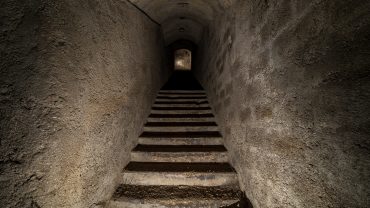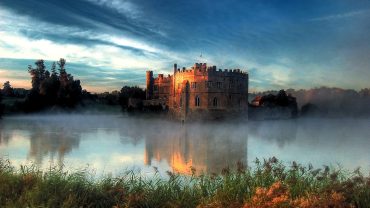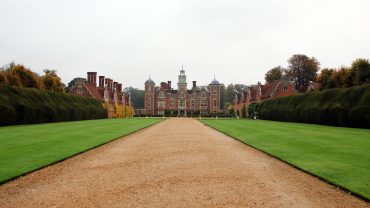Unlike castles, which were primarily built for defence, British manor houses were built to showcase wealth and authority, often situated at the centre of a rural community.
Under the medieval feudal system, the owner of the manor exercised legal and economic rights over people that lived and worked on their land, and also managed agricultural production. The manor house was therefore not simply a home, but also the hub from which they oversaw the manorial court – which had civil jurisdiction over local contracts and land tenure – and handled the estate’s economic activities.
Over the centuries, these UK manor houses evolved into symbols of comfort, style and status – shaped by changing fashions, functions, and architectural styles – while their roles shifted from feudal governance to heritage, tourism and private luxury living.
Let’s take a look at the evolution of British country manors.
From Moats to Modernity: The Evolution of British Manor Houses

Hardwick Hall in Derbyshire (Credit: stevegeer via Getty Images)
The origins of British country manors trace back to the medieval period, particularly after the Norman Conquest in the eleventh century. Early UK manor houses were typically fortified, reflecting the turbulent times and need for security. These structures often featured defensive elements such as moats, battlements, and gatehouses, with the great hall serving as the focal point for both domestic life and local governance. As political stability increased in England, especially after the Wars of the Roses in the fifteenth century, manor houses in Britain gradually shed their military features and evolved into more comfortable and elaborate homes.
Throughout the centuries, British manor houses underwent significant changes in both design and function. The Tudor period marked a shift from fortified dwellings to unfortified, architecturally ambitious ‘prodigy houses’, bold statements of wealth and ambition that emphasised comfort, display, and hospitality, hoping to attract a visit from the monarch as they made their way around the realm.
The Elizabethan and Jacobean eras introduced ornate woodwork, grand staircases, and expansive galleries, while the Georgian period brought classical symmetry and proportion to the architecture of these iconic British manors. By the Victorian era, UK manor houses incorporated a mix of styles, resulting in some of the nation’s most elaborate and picturesque residences. Over time, they also transitioned from private homes to public attractions, heritage sites, or luxury hotels.
Some of the most iconic British manor houses include Mapperton, renowned for its Jacobean architecture and beautiful gardens, as well as Hardwick Hall, Longleat House, Lyme Park, and Burghley House. These estates not only exemplify the architectural evolution of manor houses in the UK but also reflect the changing tastes and fortunes of the British aristocracy. Today, they remain enduring symbols of the nation’s history, culture, and landscape, attracting visitors from around the world with their storied pasts and architectural splendour.
Anglo-Saxon & Medieval Manor Houses | c.410 - 1485

Ightham Mote in Kent (Credit: Eddie Chui via Getty Images)
Early manor houses in England emerged during the Anglo-Saxon and medieval periods, primarily as the residences of local lords who managed agricultural estates under the feudal system which was introduced, or greatly formalised, after the Norman Conquest in 1066. These structures were typically timber-framed halls, sometimes with defensive features like moats or palisades, reflecting the need for protection in an unstable era. By the late medieval period, stone construction became more common, with one of the most notable examples being Ightham Mote in Kent, described by architectural writer John Newman as ‘the most complete small medieval manor house in the county.’
It was during this time that British country manors began to incorporate features such as great halls for communal gatherings, private chambers, and service areas. The architecture was dominated by the Gothic style, with pointed arches and large windows, though comfort was secondary to function and status.
Tudor & Elizabethan Manor Houses | 1485 - 1603

Hatfield House in Hertfordshire (Credit: Carausius via Getty Images)
The Tudor era marked a turning point, as the famous UK manor houses – Longleat in Wiltshire and Burghley House in Lincolnshire – shifted from fortified dwellings to more comfortable and decorative residences. Brick became a popular building material, and designs featured prominent chimneys, timber-framed facades, and large windows. The great hall remained central, but new rooms for privacy and entertainment emerged.
Elizabethan prodigy houses, such as Hardwick Hall in Derbyshire and Hatfield House in Hertfordshire, showcased Renaissance influences, symmetry, and grand ornamentation, built to impress and entertain rather than defend. These iconic British manors were now symbols of wealth and status, reflecting the growing influence of the gentry and merchant classes.
Stuart, Georgian & Palladian Manor Houses | 1603 - 1837

Lyme Park in Cheshire (Credit: Snowshill via Getty Images)
During the Stuart period, European influences – especially from the Netherlands and Italy – became prominent. Stone and brick continued to dominate, with the introduction of hipped roofs, sash windows, and classical details. The Georgian era brought the height of Palladianism, inspired by the Italian architect Andrea Palladio with houses such as Lyme Park in Cheshire, Wentworth Woodhouse in South Yorkshire – one of Europe’s largest houses – and Berrington Hall in Herefordshire.
These British manor houses featured symmetry, proportion, and restrained classical ornamentation, often set within landscaped parks. The Baroque style briefly flourished, adding dramatic ornamentation and grandeur to estates, but the overall trend was toward elegance and refinement. The rise of the English country house weekend social scene led to larger reception rooms, galleries for art, and dedicated spaces for music and leisure, reflecting the rise of a wealthy, cultured elite.
Victorian & Edwardian Manor Houses | 1837 - 1918

Tyntesfield House, Somerset (Credit: Mike_Boyland via Getty Images)
The Victorian period saw a revival of Gothic and other historical styles, with UK manor houses often built in brick and featuring asymmetrical layouts, ornate decoration, and polychromatic brickwork, , such as Tyntesfield House in Somerset. The rise of the middle class led to a proliferation of country houses and suburban villas, while the grandest manors became showcases for new technologies and decorative arts. The Edwardian era favoured lighter, brighter interiors and the Arts and Crafts movement, emphasising craftsmanship and traditional forms. Timber framing, pebbledash, and decorative porches became common, and British country manors were increasingly designed for comfort and modern living.
Twentieth Century Decline & Adaptive Reuse | 1919 - Present Day

Mapperton House in Dorset (Credit: urbancow via Getty Images)
After World War I, economic pressures and social change led to the decline of many famous British manor houses. Large estates were often broken up or sold, and many houses fell into disrepair or were demolished. However, others survived through adaptive reuse – converted into schools, hotels, museums, or divided into apartments. Today, surviving UK manor houses such as Mapperton in Dorset, Markenfield Hall in North Yorkshire, and The Abbey at Sutton Courtenay in Oxfordshire are celebrated as heritage sites, tourist attractions, or luxury venues, embodying centuries of architectural evolution and social history.











